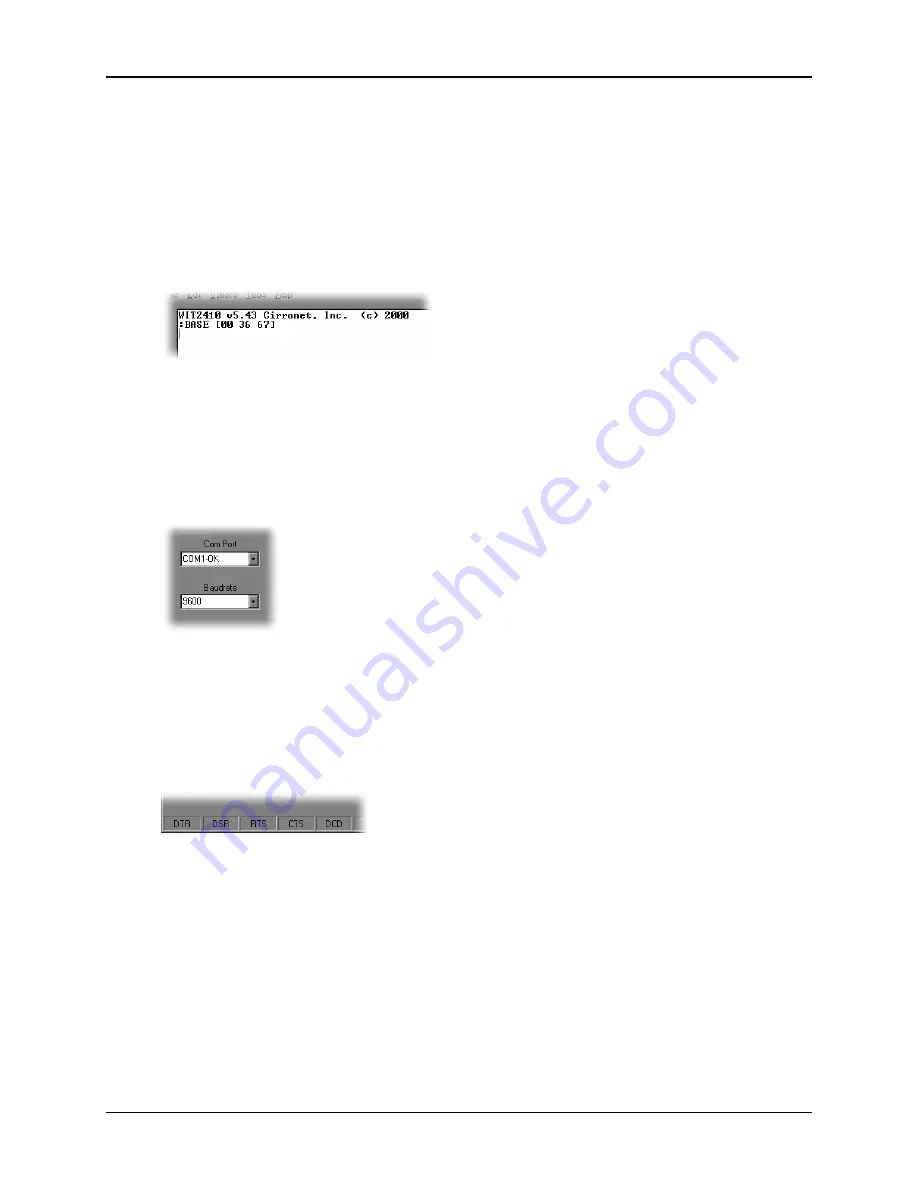
WIT2450
©
2000- 2005 Cirronet
™
Inc
46
M-2450-0000 Rev B
7.1 Starting the program
When started, WinCOM de-asserts and re-asserts the DTR line to the radio which resets
the radio causing the sign-on banner to be displayed. If the baud rate on the computer
doesn’t match the baud rate of the radio, illegible characters will be displayed. By hitting
the PgUp or PgDn key to change the baud rate, then pressing F1 twice to toggle DTR
(resets the radio) and causes a new banner to be displayed. Continue changing baud rates
in this fashion until a legible banner is displayed as shown below.
The banner indicates the radio firmware version, whether the radio is operating as a base
or a remote and the unique factory serial number of the radio module. If nothing is
displayed in the communications window of WinCOM, verify the COM port and baud
rate settings, then reset the radio (by hitting F1 twice). Cycling power to the radio also
will cause the sign on banner to be displayed unless the banner is disabled via the Banner
Display Disable command (
zb0)
.
The COM port and baud rate can be changed using the drop down menus on the bottom
right. All the available COM ports will be listed in the menu but will have OK or N/A
designated. If another program that uses a COM port is open, that COM port will not be
available for use by WinCOM.
The boxes on the lower right of the WinCOM window provide the status of the COM
port flow control being used to communicate with the radio. Note that DCD is only
asserted by radios configured as remotes when they are linked to a base radio. Radios
configured as bases always assert DCD even if no remotes are linked unless Base DCD is
asserted. Clicking on the DTR or RTS buttons will change the state of the respective
signal line in the COM port.
















































